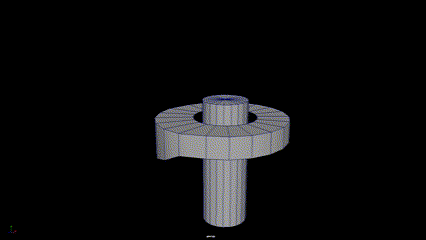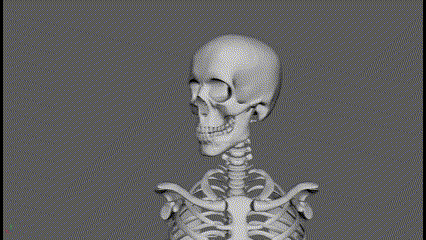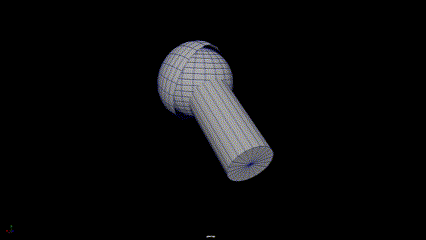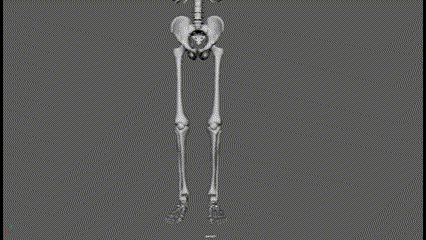Anatomy in Motion #1: Intro to Bones and Joints
The human body is capable of countless possibilities of motion. Most movements we perform (even on a daily basis) are complex systems that are based on which muscles contract, in what order, and at what time. If you are able to figure out those three variables, you should be able to know what movement is occurring. But because things can become very complicated very quickly, I think it’s useful to break stuff down first at the simplest level. Today’s post is going to start covering some functional anatomy. I know anatomy can be an intimidating topic, so in this little series of posts, I wanted to simplify the topic and hopefully make it more accessible. I’ll try to focus mostly on understanding the biomechanics of movement, without spiraling down to unnecessary biology, chemistry, or cell formation. For animation's sake, we'll focus a lot more on the things that revolve around movement and its production.
I hope you’ll learn something new today!
/!\ DISCLAIMER: Just so we are clear, this is not a medical lecture. Do not draw rushed conclusions or diagnose yourself or others. If you have health issues consult your doctor.
I know muscles are often the most intriguing part of anatomy. But before we talk about muscles, we need to cover the things that muscles that muscle act upon: bones and joints. This will be the focus of the first post.
To begin with, joints are different from bones. A bone is a single skeletal unit, a joint is the intersection of two or more bones which can be more or less movable depending on the joint. For example, we have the arm and the forearm which are bones, but we have the elbow joint connecting the two bones.
Of all the joints in the body, there is one type that is the most flexible and that creates the major movements of the body, these are the synovial joints.
We can think of the body in motion as a complex system of levers and motors that pull or release them.
If we think about muscles as the motors that actively move things, we can think about bones and joints as the framework that those muscles operate on.
My way of understanding how movement works is by starting to understand from the base how the human body is designed, and that climb starts with the skeleton. Understanding the range of motion is the first step to understanding which movements are possible for us and which aren't.
We can think about general flexibility of motion in these terms: there is a soft limitation and a hard limitation. Soft limitation can often be related to muscular problems or tightness, it can be solved through stretching and can be improved. Hard limitations are the ones given by the skeletal system, these are fewer but cannot be changed unless the bones get broken.
For example, you can't bend your elbow backward, not because your muscles aren't flexible enough, but because the elbow joint does not allow that particular range of motion. At the same time, the reason most people can't touch their feet during stretching is not because the movement is impossible, but because the muscles are not elastic enough.
Synovial joints can be of different types and subdivided depending on the amount and type of mobility they provide and that's what we are going to explore mainly in this post. It's important to note that there is a tradeoff between mobility and sturdiness in every joint, the more mobile a joint is, the more it can be prone to injury, and vice-versa. The bigger the range of motion of the joint the looser the structure around it, which means that the joint has a bigger chance of moving where it shouldn't. The range of motion of synovial joints can vary greatly as some are able to give a full 360° rotation while others provide barely a bit of wiggle room.
6 types of synovial joints:
Plane joint
Picture a plane joint as two, often pretty flat, surfaces tightly connected with each other. The joint connecting the two bones allows the two surfaces to glide on each other in all directions, even though the actual degree of movement they permit is not much. The role of plane joints is rather important as we can find them in vital positions. A good example of a plane joint is in the thoracic region, where they give some flexibility to the ribs of the chest and allows them to expand as we breathe in. We can also find them in the small set of bones on the wrists and ankles where they gain range of motion in number and act as shock absorbers.
One last part to consider is the spine. Our spine's main challenge is that it needs to be both strong and stable to protect the nerves passing through it and to support our upright posture. But it also needs to remain flexible enough for us to rotate and have a decent range of motion. The way it achieves this is through numbers. Each vertebra of the spine is a plane joint that doesn't allow more than a few degrees of rotation, but if we sum every small degree of rotation of each vertebra we end up with a significant amount of movement gained. That means that we are not able to rotate our back by a lot in one specific spot, but we still have a good amount of rotation in almost every direction we need.
Hinge joint
Hinge joints work exactly like the hinge on a door. The system allows for a good range of motion, but only on one axis. Like the hinge of a door, they are designed for one purpose: opening and closing, and that's the thing they are best at. We can find a hinge-type joint at the elbow and the knee. As a consequence of their limited amount of mobility, joints of this kind are very stable and can be packed with big and strong muscles without too much fear of injury. Examples of this are the arm's biceps and triceps and the legs' powerful muscles (in that case, the hinge joint is the knee).
Pivot joint
The name of this joint comes from its ability to "pivot" on its center axis, spinning on itself similarly to a wheel. Its range of motion covers only one axis. We can find this joint in a couple of spots; the first and most important is the first vertebrae connecting the skull and the spine. This allows us to shake our heads from side to side so we can look left and right. The second place where this joint type is found is on the elbow where it spins the ulna while we rotate the palm of our hand upside down.
Saddle joint
The saddle joint is formed by two bones with a complimentary concave and a convex side that fit together like a man on a horse. Like a man on a horse, this type of joint can rotate on two axis: front to back and side to side. This joint's limitation is the rotation on itself. A good example of this joint is in the thumb, you can open and close it for grabbing strength. And you can move it side to side so you can touch both the index and the pinky as needed.
Condyloid joint
Similar to the saddle joint, the condyloid joint allows for movement on 2 axis, the difference is that it is biased on the main axis where it provides a lot of movement, but still allows a minimal amount of movement in the other direction.
A good example of the joint is in the wrist, where you have available a great degree of motion if you rotate on the palm side up and down, but a lot less motion if you try to move it side to side (even then the pinky side of the wrist is a lot more flexible than the thumb side).
Another example is at the base of the fingers, where it allows a great deal of movement for closing and opening, and only a slight amount of movement on the side so we are able to spread our fingers.
Ball in socket
The shoulder joint
They are the most mobile joints in the body. It's formed by the connection of a round head of one bone being "socketed" into the round cavity of the other bone. Its big range of motion also makes the most unstable joint in the body, this is also because the word "socket" can be a bit misleading. Ball and socket joints are found in the connection between the leg and the hip and at the shoulder where they offer a big but necessary range of motion to our arms and legs.
I've mentioned that the word socket can be misleading because the cavity where the head is supposed to rest on is rather shallow. This is especially true at the shoulder level where the socket is almost unrecognizable and it looks a lot more similar to a golf ball sitting on a pin rather than being fully locked in. (see picture) This allows for a great degree of movement, but it means that our shoulders are kept in place for the most part by ligaments and muscles rather than solid skeletal structure.
In contrast to the hinge joint, where limited mobility means we can find a few but powerful muscles that basically have to do one job, around the ball and socket joint we see a lot of different muscles attaching from many different angles which, when coordinated, allow for freedom of movements in any direction.
What does this mean for your animation?
We often try to create a sense of realism and a feeling of organicness in our animation. That could start with understanding what a real body can and cannot do. To what degree can we move different body parts, if we can move them at all. For example, our spine will never rotate in one specific joint. Our wrists have a much greater range of movement when we flex them up and down rather than sideways. We cannot twist the specific wrist joint, we twist our wrists by twisting the radius and the ulna bones in the forearm. Our shoulders have a great range of motion on every angle but our elbow does not, it can only close and open in one direction. To rotate the elbow sideways we need to rotate the upper part of the arm which is attached to the shoulder. And so on.
This is the first degree of understanding of ranges of motion. The second degree will come when we talk about flexibility refers to muscles and their ability to stretch and contract. But that part will have to wait for later.
Pictures: https://commons.wikimedia.org/wiki/File:903_Multiaxial_Joint.jpg
https://www.hippopx.com/en/skeleton-elbow-anatomy-human-body-bone-joint-162100





















In the previous posts, we've covered the joint's range of motion and how muscles pull on them to create movement. Today, we'll dive a little bit deeper and see how both the shape of bones and muscle attachment to them interact to create a lever-like system.